
We the People (after Pierre Cavellat), 2013, © Carey Young. C-Print photograph, 190 x 124 cm. Courtesy of the artist and Paula Cooper, New York.
The art scene has started earlier than opera in Zurich in September.
With a sensational show, The Migros Museum für Gegenwartskunst re opened last autumn in the old brewery Löwenbräu- Areal in Zurich west where art, business and residential complex was developed.
Including Kunsthalle Zürich, world famous leading gallery, Hauser & Wirth, Eva Presenhuber and Bob van Orsouw returned here together. Luma Westbau/POOL etc., JRP Ringier a contemporary art publishing company and Freymond-Guth Fine Arts Gallery joined as well. Indeed the art block Löwenbräu White is internationally significant center of modern art in the world.
The invitation for the new season of The Migros Museum für Gegenwartskunst is ‘Legal Fictions’. It is the solo show of Carey Young.
Carey Young living and working in London is a well-known visual artist, using the variety of media mix such as video, photo, performance, installation, etc.
Since approx. 2003, she has focused law-based work addressing the monolithic power of the legal system, taking the experimental form from law as a conceptual and abstract time and space.
‘We the People’ is a large-scale photographic work, featuring a judge’s robe and a wig hanging on a garden washing line.

Uncertain Contract, 2008, Videostill, © Carey Young. Courtesy of the artist and Paula Cooper Gallery, New York.
In the video ‘Uncertain contract’, an actor performs a script composed of functional legal instruments such as commercial contracts.
Authority of power is divided or varied in performance and language; she highlights ambiguity or gap of law system with a sort of her joke and humor.

Body Techniques (after A Line in Ireland, Richard Long, 1974), 2007, © Carey Young. Courtesy Paula Cooper Gallery, New York.
‘The Body Techniques’ series is the video that Carey Young herself in business suit shows us her performance on the stage that is bleakly buildings sites in the United Arab Emirates. Her fiction remakes various our daily life scene under controlling of society and law system.
The show includes a number of new commissions that are contextualized by various earlier works. Her exhibitions have already achieved great success in London, Munich, and New York etc. Indeed “Legal Fictions “ at The Migros Museum für Gegenwartskunst is her first big solo show in Switzerland.
Until November 10, 2013
Silent One, 2010 Oil on linen 35.7 x 30.5 cm / 14 x 12 in
© Christopher Orr, Hauser & Wirth Zürich,IBID Projects,London
One old beer factory with a lion mark in Löwenbrau-Area, which is the base of Zurich’s modern art, is currently going through a large-scale 2-year development.
Although many prominent galleries around the world used co-existed in this area, such as Migros Museum für Gegenwartskunst, Eva Presenhuber, Hauser & Wirth, Peter Kilchmann and Bob van Orsouw, all these galleries were moved altogether last year. For the time being, Hubertus Exhibitions in Kreis 9 area will be the location for activities.
If it were in Tokyo, it would be like going to the bay area. It was getting dark and I was heading towards the direction where you may see fewer people. As I was not farmilier with that area, I took a wrong tram, but somehow I managed to get there, with a little help from a friend over the cell phone.
It was the opening party of Migros Museum that night. Since the party had started earlier, some people were already coming out. At the entrance of the building, people who looked like art students got together, enjoying smoking in the cold air.
Up on the staircase, I saw Migros Museum für Gegenwartskunst on the right, and 2 galleries on the left.
Bob van Orsouw was introducing the latest works of Nobuyoshi Araki. As might be expected, they had a good collection. Next to that was Hauser & Wirth, which really demonstrated the luxury of the top-notch art world.
While it has been the custom that you could look at other galleries on the opening night of one gallery, with this building, the floor gave the impression of a united floor when each gallery left its door open, which I found very interesting.
I saw an enigmatic picture.
From the entrance, some peculiar light was inviting me, like saying, “Come over here.”
The author was Scottish Christopher Orr. A picture which I felt like I have met somewhere long time ago. However, it was a false illusion, and once you stepped into this odd world of this contemporary artist, by tracking back the genealogy of surreal or fantasy paintings, I soon realized that the origin of his images had to go back another century.
Orr was a German scenary painter, and it has been said that he was very much affected by British Joseph Mallord William Turner or by the romantic expression by another German scenary painter, Caspar David Friedrich, who shared the same epoch.
Whether it was ruins or rainstorm, it was a scene of something crumbling. Appreciating its peculiar uneasy beauty of romanticism, and traveling back and forth between fiction and constructivism, this artist worked his way by erasing the borderline of reality and fantasy.
While it suggested as well as symbolized something, the abstractiveness of Orr was just like a trip back and forth between the energy of fetal movement like magma burning deep inside the earth and illusion, which still continued to the story of the present and the future.
The texture created by painting in so many layers and figures. Or scraping the paint off by knife in order to have a mysterious shape suddenly appear at the bottom of the canvas.
Most of these 13 new works exhibited here were rather small, F0 or F3. Those small things were inducing words here and there out of the tranquil wall, and the meanings that the pictures represented were crossing from every angle of the world.
At 9:00 pm in the venue, sceneries of fiction that were neither uneasy another world or this world, were placed side by side, and the lyricism of light and darkness was set free.
http://www.hauserwirth.com/
Leave your comment
Art Public : Ai Weiwei / Field 2010
We saw a huge box of rusted-iron color. It was “Signal Control Tower” designed by Herzog & de Meuron. The train proceeded into the Basel station. This is the largest border station in Europe, where Switzerland, Germany and France meet. Getting off at this station always gives me a little bit of an exotic air.
Going through the neo-baroque façade, we got on the tram to run through the medieval town, and soon after things came into our sight, we arrived in the Messe venue.
The world’s largest exposition of art, Art Basel, celebrated its 41st anniversary this year. Every year, the fair takes place before Europe goes into the holiday season. This year, it was held for 5 days, from June 16 through June 20. The preview on the 15th was a spectacular opening with invites and media people, as usual, by welcoming world’s renowned representatives of art galleries from various countries, including gallerists, curators, critics and VIPs.
Participating in Art Basel means equal to receive the honor as one of the top selected galleries in the world. More than 300 leading galleries were carefully selected out of approx. 1100 applied galleries from 37 countries in North and South Americas, Europe, Asia and Africa. From modern art to cutting-edge contemporary art, the artworks by more than 2500 artists all gathered here.
One of the regulars from Japan, a ceramic art piece by Yoshitomo Nara from Tomio Koyama Gallery, was one of them. Hiroshi Sugimoto and Marlene Dumas from Gallery Koyanagai, Kohei Nara and JJoonho from SCAI BATHHOUSE were amont others from Japan. Teppei Kaneujifrom Shugorats, Yuki Kimura and Garcia Torres from Taka Ishii Gallery, and so on, followed. Each gallery expands its collectors and fans every year.
During those days of the Fair, the World Cup in South Africa was demonstrating its exciting games coincidentally. Adjacent to the main venue, at the café in the building where the media center was setup, the gallerists taking a break and other guests were all cheering.
Last year, a solid black cross was displayed at the front of the site, with Art Basel-like irony, and very tense atmosphere was observed in every gallery. However, with this year’s relaxed air, it appeared that the pleasure to walk around to enjoy art pieces was back.
The flow from the previous fair that was intended to overcome the financial crisis, and return to the basics to face the art, seemed more stabilized, which resulted well in the firm sales.
While The Art Basel Secretariat announced the high quality of the works and unexpected results, what they boasted especially as a success was the record breaking attendance of 62,500 from around the globe, showing the high level of interest and knowledge of those who came to see the show.
Ernst Beyeler, the founder of Fondation Beyeler, who established the Art Basel in 1971 with his freind, passed away this February.
During the period of Art Basel, a demonstration developed by having “ACANTUS” by Henri Matisse as the core, was introduced in the special venue. At the Hall 2 site, with a booth very close to the entrance every year, Mr. in the photo was smiling gently. The birds that Matisse, one of his favorite aritsts, brought from the Polinasian sky were flying high.
Art Basel plays a role of the place where artworks representing the present time are exhibited. The Fair this year received quite a lot of criticisms of not being fresh, in that sense, because many works from the 19th and 20th centuries were displayed. While it was true that the number of works classified as modern art and conceptual art such as those by Milo, Picasso, Kandinsky and Giacometti have increased, there were too many artworks that were easy to understand and worthy of comfortable investments.
A few week ago, one article caught my eye. It was talking about one exhibition in an art gallery in Japan, and it described with an adjectival clause, “as if shown in a textbook…” I was pretty sure that it was a criticism but as I read further, I realized it was just contrary, and it was a praise expressing that it was incredible to see such wonderful famous artworks arranged side by side. It was just like the scales fell from my eyes.
If expressed in such a manner, Art Basel demonstrates the works of the masters in the art history or geniuses who died early, or emerging contemporary artists with momentum, appearing in front of your eyes, as if you are turning the pages of the complete collection of art around the world, or very thick books of collected works in art galleries.
I heard that the fair, when it started, had brought controversy because art was sold just like electric appliances or furniture. However, in the last 40 years, pros and cons or the meaning of the fair have changed tremendously.
Although that might be true, I assumed for the first-timer visitors to actually see with their own eyes that the distribution was clearly taking place on site at the booths of the fair, instead of at the back of a gallery’s salon or grand auctions, would be quite something and surprising.
From various corners in the venue, including Timothy Taylor Gallery from London, the comment, “very healthy market” was heard quite often.
We heard that the trend in the last few years of investing in huge “contemporary art” because of the advice of financial consults, although it might be beyond one’s comprehension, has died down. Apart from moving to the art galleries, art fans or top collectors gathered here to judge art with their own eyes, to be impressed and to select the one they wanted to have. The role to influence the world and the importance of accumulation of Art Basel took pride in a serious manner.
Iwan Wirth of Hauser &Wirth that has galleries in Zurich, London and New York, said in his interview, “I was impressed to see such huge interest among collectors, not only for established positions, but also for quality work by young artists. The market is back and stronger than ever, as collectors are confident to make decisions.”
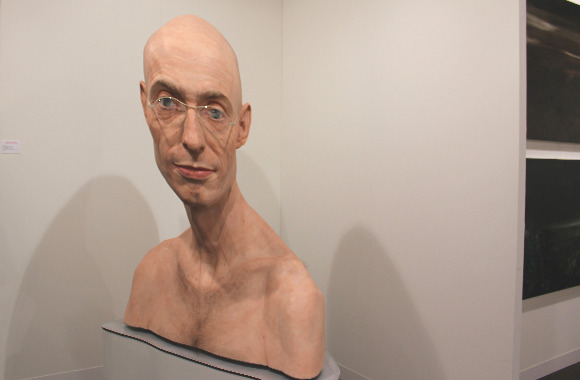
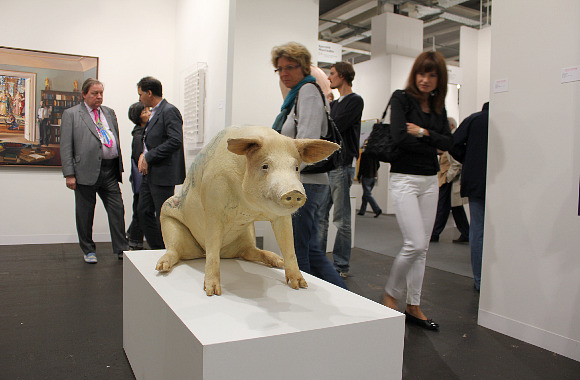
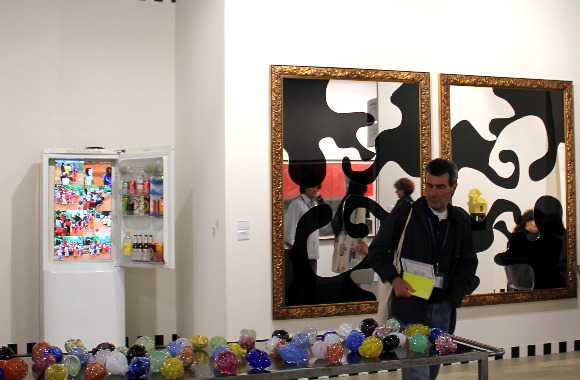
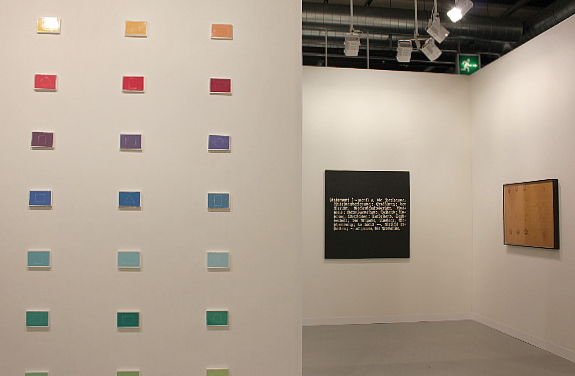
A young couple was talking with the gallerist in front of the work by Christo. Soon, 2 or 3 works were brought out from the back. Fortunately, as I just happened to walk by, I was also invited to see the series of his work.
While it was said that notable works would have buyers already at the preview, many people still “purchased” at the site on weekdays, as artworks came and went.
Garsons clad in black, carrying the bottle of Veuve Clicquot in the wagon of ice, were walking around the hallway.
While these works were exhibited in the 300 galleries in the Hall 2, large-scale installations that were literally surpassing the size limit, or 3-dimentional works or videos were exhibited in the adjacent Art Unlimited in Hall 1, across the courtyard, and you could go through those, experiencing one by one. As the space is opened up from the floor all the way to the ceiling, it gave us a fun feeling of experiment of participating in a part of the art, just like you were playing in a swimming pool.
Since the size was too large to carry in a car, those who wanted to purchase had to discuss somewhere else.

Michael Beutler, Galerie Christian Nagel | Köln; Galerie Bärbel Grässlin | Frankfurt am Main; Pierre Bismuth, Team Gallery | New York Photo:Art Basel
In conjunction with Art Basel, galleries in Basel held major exhibitions during the same period of time.
“Prayer Sheet with the Wound and the Nail” and “RESTRAINT” by Mattew Barny, who is one of the hottest artists and the partner of singer Bjork, were held in Museum.
Drawing Exhibition by Trockel was in Kunstmuseum Basel. Jean-Michel Basqiat Exhhibition and Felix Gonzalez-Torres Exhibition, both of whom died young, were held concurently in Fondation Beyeler.
Furthermore, Rodney Graham Exhhibition in The Museum für Gegenwartskunst, and Robot Dreams Exhibiton in Mueseum were other major ones to note.
Looking at many art galleries in Basel, from the view points of architecture and smart planning, Basel surpasses Zurich as a town of art, as one would expect, which makes me understand the mutual relationship to simulate each other.
A medieval town of pointed towers mixed with the culture is very interesting. Art Basel, called the Queen of the World, spreads the cutting-edge contemporary art just like tree branches in this neighborhood, and creates a function of interlocking.
Galleries: FOUNDATION BEYELER | Basel (2)/ Helly Nahmad Gallery |New York/ Galerie Gmurzynska|Zug/ Shafrazi Gallery | New York/Sikkema Jenkins & Co.|New York/Sperone Westwater|New York(2)/Marlborough Galerie GmbH|Zurich/Sies + Höke| Düsseldorf/ Peter Kilchmann|Zurich (2)/Richard Gray Gallery|Chicago/Bob van Orsouw|Zurich/David Zwirner|New York/Galleria Continua|San Gimignano Italy/Max Hetzler|Berlin/Hans Mayer| Düsseldorf/Gallery|Seoul/ó Marconi Gallery|Milano/Waddington Galleries|London/Galerie Hans Mayer | Düsseldorf
Photo:©Mieko Yagi
Leave your comment
William Forsythe The Defenders Part 2 2008 Mirrors, carpet Ca. 1700 x 800 cm /Photo Julian Gabriel Richter
It was 1916 when Tristan Tzara declared Dadaism in Zurich. While this town has been influenced by major events in art history later on, it has been established as one of the important bases of the world’s contemporary art.
One museum that plays the role of leader among them is Migros Museum of Contemporary Art (Migros Museum für Gegenwartskunst.)
As a matter of fact, there are surprisingly only a few museums that specialize in contemporary art in Europe, but Migros Museum of Contemporary Art is well known as an existence that always collects and exhibits unique and high-quality artworks along with Le Palais de Tokyo in Paris and Whitechapel Art Gallery in London, in the world’s art scene.
The museum opened in 1996. Around this time, from the mid 1990s up to the present time, there has been a tendency that lot of artists gathered together in this town from all over the world.
Migros Museum of Contemporary Art is located inside the building that was remodeled exactly like a former old Swiss brewery with the familiar brand mark of a lion. Other world renowned galleries of contemporary art also co-exist in this space, such as Eva Presenhuber, Hauser & Wirth, Peter Kilchmann, Bob van Orsouw, as well as Kunsthalle Zürich. Migros Museum of Contemporary Art sometimes developes activities collaborating with these galleries.
There are many galleries and quite a few creators focus on their creative works in this neighborhood called Löwenbrau-Area, and it is an area in Zurich where top-notch information is sent out. Migros Museum of Contemporary Art facilitates great environments for the art students in this area so that they can continue their creative activities in Zurich after graduation. Simultaneously, the museum intends to keep on creating the art history of contemporary art by close relationship with the artists around the world through a process of interaction among people.
The museum is under the patronage of the largest Swiss retailer, Migros. It incorporates various industries under its umbrella such as supermarkets, department stores, schools and so on. Although the eventful and really challenging life of the founder, Gottlieb Duttweiler, is well known, it is worth noting genealogically that he himself collected avant-garde paintings.
Anetta Mona Chisa and Lucia Tkácová Manifesto of Futurist Woman (Let’s Conclude) 2008 Single-channel videoprojection (color, sound) 11:13 min.
At the moment, Migros Museum of Contemporary Art is holding a truly powerful exhibtion, as if the whole 20th century philosophy and ideas were restructured.
This group exhibition, “While bodies get mirrored- An Exhibition about Movement, Formalism and Space” brings 13 world’s renowned contemporary artists displaying totally different developments and various movements of contents, through the threads of symbolic vocabulary, such as dance, sculpture, video and installation.
One focus of the exhibition is the influence of (post) modern dance and choreography in contemporary art. Another central theme is the re-presentation of the performative, and the notation of movement and dancerly activities through the most varied media.
Early post modern dance and its postulation that “every movement is part of a dance and every person is a dancer” can be read on the one hand as an historical bridging moment to modernism, but also, on the other, as a moment that links the exhibited positions in this exhibition. In post modern dance, the legacy of formalist expression of movement has been applied and further developed, in a reaction to contemporary visual arts. In the last few years there has been an increased interest by younger artists in resuming and rediscovering this avant-garde movement of the early 20th century – the formal-aesthetic as well as the social perspective.
Kelly Nipper Shifting Shapes (3, 6, 9, 12) 2010 3-Kanal-Videoprojektion (Farbe, Ton) 10:1 min. , Loop/FBM Studio, Zürich © the artist
I heard the interview with the curator, Raphael Gygax.
“The title ‘While bodies get mirrored’ may present complexities at a glance, but first of all, this is very poetic and reflects the three moments that we wanted to pursue: formalism, movement and space. The work requires certain space that mirrors or reflects them. To reflect them in modern art quite often has a close relationship with the segmentation of human body.”
Director, Heike Munder, has been successfully shown challenging events one after another since her appointment in 2001.
“We have presented performative activities over the years. They are movements and theatrical forms of expressions. We have collected all those elements into this space as a group exhibition this time.”
At the very back of the site, you will see “The Defenders Part2” by William Forsythe, where over 70 mirrors were wedged into one another like piles on a bright red carpet. Although through totally different manners, the language associated with this artwork corresponds, from work to work in the whole exhibition, to the “Get Mirroed” concept.
4jpg
Martin Soto Climent The Swan Swoons in the Still of the Swirl 2010 Single-channel-videoprojection (color, sound), blinds, aluminum Dimensions variable/ Photo A.Burger,Zurich
Once you step in the venue, you will be welcomed by the work “The Swan Swoons in the Still of Swirl” by Mexican artist Mrtin Soto Climent, which has picked up the DNA of Forsythe and can be considered the implicaton of it. Steel sculpture and the author who makes it dance appear on the screen.
By following this conductor wire, you will reach the dance by May Deran, an American avant-garde pioneer who reminds us of animism.
9fcff25167
Maya Deren A Study in Choreography for Camera 1945 Single-channel video projection (16mm film transferred to DVD, b/w, no sound) 3 min. Loop
Further ahead, there is a film by Delia Gonzalez, which extracts his imtimate female image based on the passage of the work by Henry Mirror. Wearing black wings of Oberon, the King of the Fairies from Shakespere’s Midsummer Nights Dream, a dancer who looks like appeared from the deep darkness, dances in a magical manner.
817edaee87-580×463
Delia Gonzalez In Remembrance… 2010 Single-channel video projection (16mm film transferred to DVD, color, sound) 12:50 min.
Let’s hear more of what Heike Munder says.
“The spirituality in the modern times lives between re-formalism and fantasy. The two important movements mean that while form is against geometry, they always overlap at the same time. Utopia is lost, but many artists interact with Utopia. They retrieve it by their strong artistic power.”
Alphabet Letters by Paulina Olowska
3jpg
Paulina Olowska Pioneer Alphabet Letters 2005 Box with 26 cards, colored, 4 cards, b/w je 21 x 15 cm/ Photo A.Burger,Zurich
While expanding the sculptural field, Julian Goethe tries to solidify the movement further by putting up an extensive rope.
9jpg
Julian Goethe: Kontakt, 2005, MDF wood, lightnings, Ca. 250 x 400 x 20 cm, © the artist, Photo A. Burger,Zurich
10jpg1
Julian Goethe Extended Version 2010 Rope, metal Grösse variabel/ Photo A.Burger,Zurich
Anna Molska tries socio-political approaches.
14jpg
Anna Molska: Tanagram, 2006 – 2007, Single-channel video (b/w, sound), 5:10 min, © the artist
“You will understand that the origin of their art is holding hands with the idea of Utopia.”
132jpg-1
Hanna Schwarz Give 2010 Single-channel video on monitor (16mm film transferred to DVD, color, sound) 5:30 min.
“In the early 20th century, cultural anthropologists, psychologists and sociologists assumed that the imprints by body or movements were given by spiritual culture. This exhibition, I believe, is one ideal way of expressing such influence and legacy.”
A couple years ago, I had a chance to interview Heike Munder. She explained their “on going art prosess” which was the strategy and also the mission of this museium, as follows:
“Art is always connected with the society. It links to the world and it is open toward outside. Therefore, it can be said that art links to politics, economics and history as well. Ask the audience and the society about art. People think, feel and get excited. Or feel happy. That reflects on the museum, and we ask again. This repetition will continue permanently.”
62jpg
Mai-Thu Perret Winter of Discontent or the Ballad of a Russian Doll 2003 Wood, light bulb, corrugated steel, paint 40 x 407 x 250 cm/ Photo A.Burger,Zurich
“Imagine that the movement of the museum is laying down roots under the ground. Soon or later, it will become a tree. Then it may bloom. Or a wide forest might be born. Isn’t it wonderful? That is my understanding of “on going art prosess.”
“While bodies get mirrored” is glowing with its root under the ground of “on going art prosess,” and it can be interpreted as the comprehensive group exhibition at present.
I felt strange happiness that I myself felt the reflection in the Utopia presented in this exhibition.
…………………………………………………………………………………………………….
Artists comprising “While bodies get mirrored”
Anetta Mona Chisa 1975, Romania; Maya Deren  1917 – 1961 Ukraine; William Forsythe 1949 USA; JulianGoethe 1966 Germany; Delia Gonzalez 1972 USA; Babette Mangolte 1941 France Anna Molska 1983 Poland; Kelly Nipper 1971 USA style; Paulina Olowska 1976 Poland; Silke Otto-Knapp 1970 Germany; Mai-Thu Perret 1976 Switzerland; Hanna Schwarz 1975 Germany; Martin Soto Climent 1977 Mexico; Lucia Tkácová 1977 Slovakia
Until May 30, 2010
http://www.migrosmuseum.ch/
Leave your comment
While opera is, of course, famous when you talk about Zurich Opera House, the stage performances by the Zurich Ballet, which belongs to the House, is said to be “the most beautiful ballet in Europe” as a matter of fact.
As wonderful opera singers gather together in this small town, so do the ballet dancers. Selected elitests of the elite dancers in the world come together to this town, and perform like twinkling stars on the stage.
Heinz Spoerli, who is well known as a choreographer, used to be a dancer himself. He was appointed as the Artistic Director of Zurich Ballet in 1996, and since then he has been continuously creating innovative and unique productions.
Dancing the “Goldberg-Variationen” of Bach in all.
While this piece is best known for the performance by Glenn Gould, when 2 arias and 30 variations including the repeats are played, the performance will easily exceed 1 hour. The dances and short intervals of movements between dances make the performance of about 90 minutes. The pianist who continued to play throughout the performance without intermission was Alexy Botvinov. He was born in Odessa in Ukraine, and since he won the Rachmaninow-Competiton in Moscow when he ws 19, he has established his world reputation by winning the International Bach-Competitions and Schumann-Competition
If it is a solo concert like this time, all the more, and even if it is a ballet performance, lot of people come, being anxious to listen to his performance. Since playing Schumann for the ballet performance of “Szenen” in the mid-90’s, Odessa has been a good partner of Spoerli, creating excellent harmonies.
All the dancers of Zurich Ballet boast the level of elite performance and all capable of performing as soloists.
The expression of feelings by Yen Han, who receives overwhelming fan support, is delicate, deep and beautiful. His brathtaking perfect proportion brings such an enchanting elegance. Aliya Tanykpayeva is transferred from the Imperial Russian Ballet, while Sarah-Jane Brodbeck demonstrates cheerful, free and cute atmosphere.
Male dancers include Artur Babajanyan, Bryan Chan, Arman Grigoryan and so on. Each is the best and the brightest with the capabilities of super elevation, breathtaking motionlessness as well as talented agility.
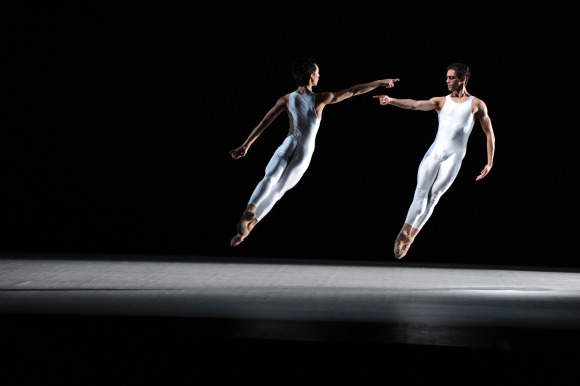
When the first aria started, many shadows started to move slowly. On the very dimly lit stage, each dancer seemed like to have become each sound, transmitting its own musical note.
No stage props. Simply Alexy Botvinov and one piano in the orchestra pit. Lighting, movements of the dancers, and the leotards that changed colors one after another. Instead of addition, deduction was the key here. Shaved off as much as possible, this piece of work seemed to bring about the inner face of each who was involved in this stage. Lights and shadows crossed each other.
Spoerli says, “For me, Goldberg-Variationen is my passing life itself.” Men and women meet, become enchanted each other and unite, and sometimes separation occurs. As you age, you become mature and change. As such, men and women get together then part from each other, as the time goes by.
The dancers, who danced through 30 variations of life, were sometimes elegant, lonely and sophisticated, and other times, they demonstrated such unpredictable surprising “dance” as if we were watching acrobatic gymnastics. Meticulously calculated varieties of exciting scenes appeared and disappeared in front of our eyes. Although there were soloests in the halfway, “pas de deux” was performed in the latter 3 pieces. They were so sophisticaated and flexible, just like dances in a dream.
The Goldberg-Variationen is “prelude” of the 16th variation, with comparison in the first half and the latter half. Spoerli choriographed it “as if forming into an arch.” In the scene when the first aria was repeated and it ended slowly, tranquility was brought back on the stage.
It was a long piece of music that even had an anecdote that it was performed due to insomnia. I was worried that I might fall a sleep, but was alert all throughout the performance by lots of surprises. Contrary to its highly evaluated production for many years, I heard “It’s just a performance with lots of changing colors of leotards and lights and lots of dancers come and go to dance. That’s all” by the regulars of Opera House. It was interesting to hear.
Omission that showed such enormous piece in a simple way just like that. It was assurance and sublimation of the basics of the classic. It reminded me that something like a cosmic view created by this ballet company has made Zurich Ballet very unusual.
Photo: Opernhaus Zürich / Peter Schnetz
http://www.opernhaus.ch
Leave your comment
At the site of Jenny Holzer Exhibition at Fondation Beyel, somehow taking pictures is allowed, possibly a part of the intentional planning.Much talked about collaboration with the architecture by Renzo Piano. Other artists include Giacometti. Picasso, Max Ernst, and Andy Warhall who, for some period in his career, enjoyed outdoor advertising such as neon as his media for his expression. These are selected by Holzer herself, as a curator, from the collection of the Foundation. Here you may enjoy dialogues with these works of art.
http://www.beyeler.com
y1
Leave your comment
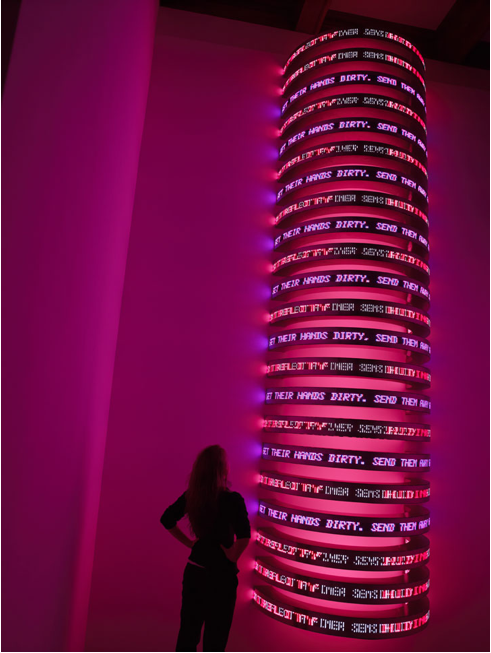
It is just less than 1-hour ride from Zurich to Basel by nonstop tain. While Basel is well known for its fairs of art or watches, it is an old city developed as the center for arts and science as well as culture, since the Medieval Ages. Sophisticated elegance is found in the Old Town or along the Rhein. The national train station of Basel is a station at the border with a neo-baroque façade. Germany, France and Switzerland all join its borders here.
We took the tram from the station to Riehn in the suburb. Although you can find many beautiful art museums in the world, at this Fondation Beyeler, situated by a big pond with abundant water, the tranquility and elegance welcome the minds of visitors who come here to appreciate art.
Work by the world’s well-known architect, Renzo Piano
Not to mention that Beyeler has wonderful and carefully selected collections, it is known as a museum that hold very high-quality exhibitions in Europe. At the site of the Basel Art Fair every year, this is the art museum where you always find on your right from the entrance, as the very first booth.
Jenny Holzer Exhibition is being held over the New Year. While there is no need to refresh your memory, she is one of the most prominent contemporary artists today. She won the Golden Lion award in the Venice Biennale in 1990, and since this recognition, she has developed her creative activities which conveys, like abundant waves, her words of strong social and political but still poetic nature into a wider field.
She was born in Ohio, USA in 1950. Her recent projects have often involved cties around the world, being used as medea, such as sending phrases on electric LED bulletin boards. The exhibition this time in Zurich demonstrated her work on the wall on the hill of Lindenh that looked down the Limmat River in the Old Town. In Basel, her messages were kept running through the cathedral, inside the SBB station, City Hall, or on stone pavements and on the bronze Virgin Mary in the church.
g_FB_holzer-jpg
© 2009 Jenny Holzer, member Artists Rights Society (ARS), New York Photo: Serge Hasenböhler
The exhibition consists of the texts in the late ‘70s and major works in all the fields she has been involved since the late ‘80s. Especially, it focuses on her recent works including those that have not yet been published in Europe. It is a large-scale show for the first time in Switzerland, introducing paintings, objects as well as LED installations.
Furthermore, this is for the special and flexible courtesy of Beyeler that they have selected, from their collections, the works of A. Giacometti. P. Picasso, K. Malevich, and F. Bacon, so that the viewers can also encounter totally different types of art, in terms of interaction with the works of Holzer, while they move from one installation to another or at the same time of viewing the works of Holzer.
The exhibition will be open until January 24, 2010.
http://www.beyeler.com/
Leave your comment
![]()
Tracking Happiness, 2009 Production still © Mircea Cantor
The image of the women walking slowing carrying brooms has been stuck one corner of my head. That motif has been appearging and disappearing. Now it seems like I am trapped in the trick of this artist.
Mircea Cantor.
Things that have crept into our daily lives before we know it, and that have become our patterns unconsciously, but make us suddenly wonder why or bring some uneasiness.
Our everyday common scenes disturb our daily lives.
Tracking Happiness is also the title of the film that Cantor created for this exhibtion.
Wearing pure-white clothes, they move slowly barefoot in the soft sand like dancing.
We are not sure what the purpose is. They walk endlessly like wandering in a dream, and the footprints are erased clean by the brooms.
Strangely blight with the grainy light exposing the empty space, the women link to the image of angels, in a dimension different from the present.
They chase things left somewhere unnoticed, or things that have been erased. Or they trace their footprints in a different way.
It reminds us of the present age that we are under the control of communications by computers or electronic devices. He tries to establish a different reality, against the world where private information is accumulated, multiplied and disseminated, which he says is also his bewilderment.
The work includes various media such as video, photographs, objects, installations, etc. Cantor also takes advantage of the media incorporated more in the society, such as newspaper ads, as one method of expression.
Born in 1977 in Rumania, he currently lives in Paris.
His solo shows at Camden Arts Centre in London and Pompidou Centre in Paris were sensational and stole the scene of Europe. Now for the first time in Switzerland, his one-man show has opened.
Until Nov. 8, 2009
Photo: Kunsthaus Zürich
http://www.kunsthaus.ch/
Leave your comment
007-a
Geographically speaking, it is in the south-southeast of the Lake Zurich. This side is called Silver Coast, contrast to the Gold Coast of the other side of the lake. Because the sun shines by grazing the mountains, shadows are darker. The light is somewhat dreary, and the streets of buildings with beautiful neo-classical carvings are full of stories. Although there must be a lot of stories to tell, the streets seem to trap us into puzzles to be solved whenever we walk on the streets.
Getting off the tram and walk to the left. After passing the iron-gate on the slope, and on the top of a small hill, you will see an elegant villa build by Otto Wesendonck, a successful silk trader in the mid 19th century. This mansion is the old wing of Museum Rietberg. The building right in front of that is the new wing and most of you who are involved in architecture may be familiar with this building since it has held world-class competitions.
The collections of Museum Rietberg include Oriental, African, American and Oceanic arts, and this is very unusual for an European museum.
However, that is the part where you find the Swiss folklore art, and I realized for the first time at this exhibition of Performing Masks Swiss Carnival, which displays carnival masks, that the museum has an enormous permanent collection of Swiss masks.
image2_640_480
Carnival mask, Tschäggäta Switzerland, Lötschen valley, early 20th century
It was the time when I was wondering where the mountain people are now. One day by chance on TV, I saw the people who were walking through the field of snow, by wearing huge masks that were hard to tell whether they were those of animals or humans.
I was told it was a traditional local festival called Tschäggätä in the Valais region, to get rid of evil spirits. It is held on the Thursday before the Ash Wednesday in February. It is very interesting because the way it looks and the custom to wake up children by visiting houses are similar to the Japanese Namahage.
Although there are various stories as to the masks, it is said that the masks used for this occasion is the oldest ones in Switzerland. Because their facial expressions are too fantastic, super-human and mystic, it had already attracted the attention of ethnologists by the end of the 19th century.
image1_640_480
Museum Rietberg Zurich Carnival mask Carver: Albert Anton Willi (1872-1954) Switzerland, Domat/Ems
Furthermore, the masks in the Salganz region where Rumantsch, one of the Swiss 4 languages, is the official language, have the characteristics of rich expressions which extend vertically and horizontally. When I was going through the exhibition catalogue, I found one photo where Mr. Albert Anton Willi, who was a sculptor in this region, was putting an expression of a mask on his face in front of a mirror.
007-p
Many of the masks displayed this time are made by curving woods and coloring, by using animal skins, sheep -skin and textiles and so on. While there are 3 major regions where the masks are handed down through generations, it is overwhelming to see the enormous variety of expressions. I wonder this tells us that individualism were accelerated more in the days when the nature was severe and the people had to live in the environment where communications were cut off due to the rugged mountains.
In this country surrounded by the mountains, religions before Christianity was brought in, or faith before religion, have been affected in various ways by the surrounding countries. In some regions, they have integrated with Catholicism and re-grown as individual cultures.
Awe and respect for huge mountains. I hear that the roots of many mythologies and legends can often be found in the regional festivals.
From the Alpine mountains or deep in the forests, in the room deep in the museum, the sprits are conspicuous.
http://www.stadt-zuerich.ch/kultur/en/index/institutionen/museum_rietberg.html
Leave your comment
There is a think tank team called “Brainstorming” who sends out unique contemporary art works. While explaining its background may require some length of time, a Dutch kinetic sculptor, Teo Jansen was introduced by this group the other day.
Since the large-scale exhibition, first time in Asia, was held in Hibiya, Tokyo from January to April this year, many of you may already have seen his works.
The CM entitled “Defining innovation” onaired in South Africa in 2006, was talked about a lot around the world.
A strange “living creature” that you had never seen before, walked on a wind-whipped dark beach together with Jansen, fighting against a roaring rainstorm. This mysterious image and his economical phrase were cool and it demonstrated his excellent sense of creativity.
This time, Jansen has brought “Animaris Umerus” and some of its buddy small “living creatures” to Zurich.
Plastic pipes which induce electricity that ordinary household use. The framework is made by using nylon strings to fasten these pipes. Electric cables or vinyl strings were also used. Despite my expectation that he would not use any organic materials, he answered in the interview that he used egg white for the eyes and skins for some reason.
Animals on a sandy beach, or beach animals. Although such names are well known in Japan, “Strandbiester,” the German word for that, emphasizes more on an animal image that has landed from the ocean, which sounds mysterious for its collective term itself. It also gives somewhat humorous nuance such as something dangerous but cute.
As if it is a living creature of Paleozoic era, having numerous legs like a monster centipede, moves and runs by wind power. Because of the grandness of each “creature” he has created and its interesting sound of Latin language, one may easily imagine a dinosaur.
Although Jansen majored in physics at the Delft University of Technology, he became a painter.
I believe it was before he became the painter, when he used to walk along the beach to put together his scripts for newspapers. I am not sure for what he was writing the script, but one day, he was inspired to create an image of a large “living creature” walking on a sandy beach.
It had been a long time since that day.
It was September, 19 years ago. He went to purchase plastic pipes.
“Throughout that afternoon, I was playing around with those pipes. It was almost evening time. I felt certain that I would be living with these plastic pipes for the rest of my life.”
Technical ideas and art were united, and a totally new “living creature” baby was born on this day.
“They don’t require any food. What they need to survive is simply the wind. They do not need time to move around to find food, like other animals.”
“Living creatures” of Jansen eat the wind and live on a sandy beach.
“They can play with children on the beach, or they can live together with other animals. However, since the living creatures that I create continuously evolve, soon or later they may become wiser than human beings. It is a form of new life.”
“Why are you keep on creating living creatures on the beach?”
“Why? I don’t know. Now let me ask you. Why we, human beings, live on this earth?”
Interview:Digital Brainstorming
BMW 「Defining innovation」
http://www.bmw.co.za/onlinenews/issue1/advert.html
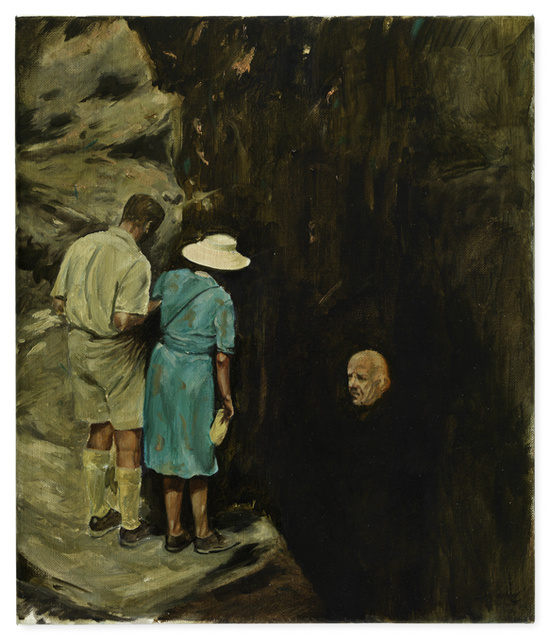
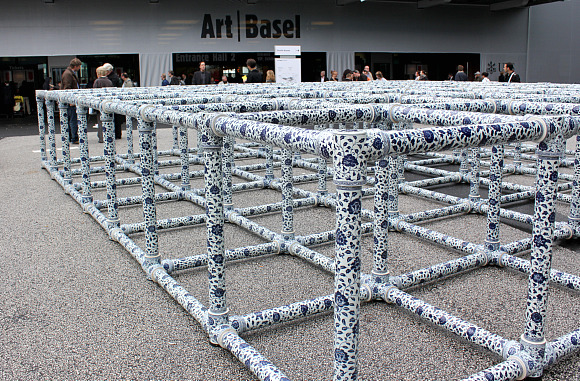
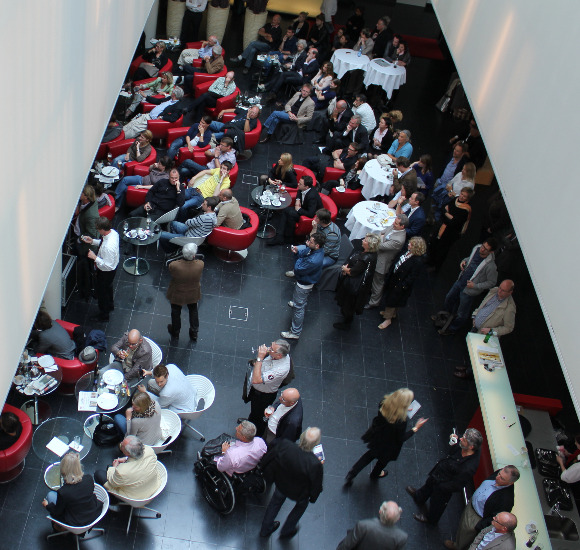
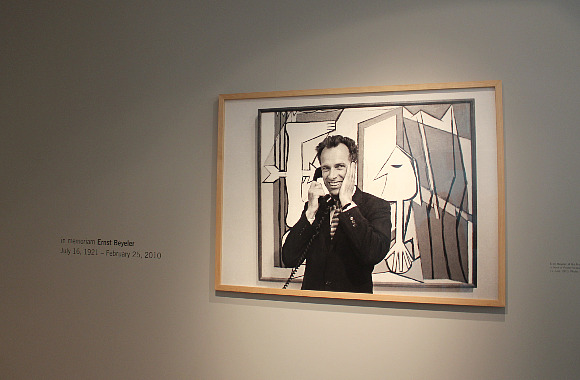
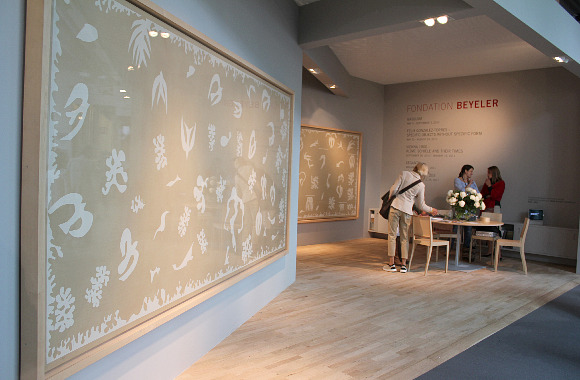
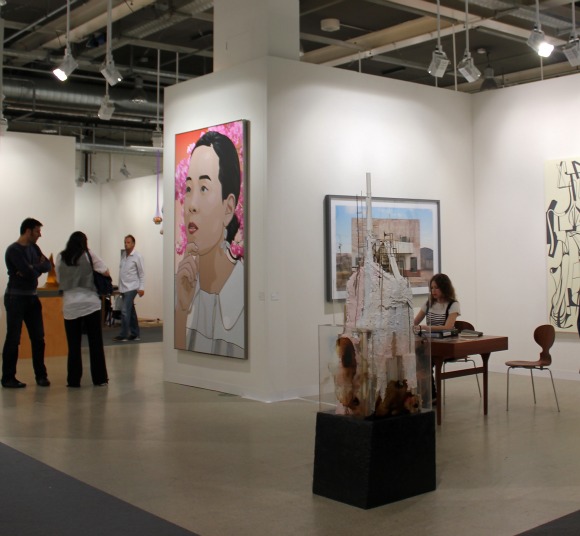
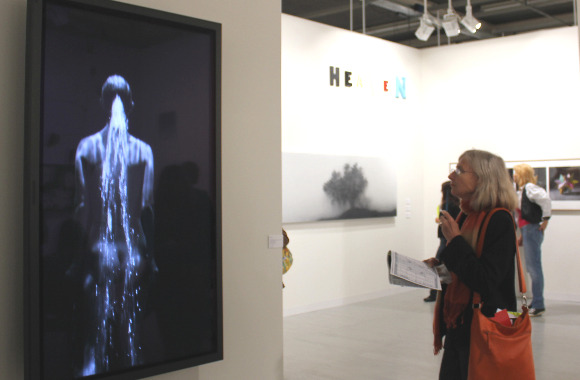
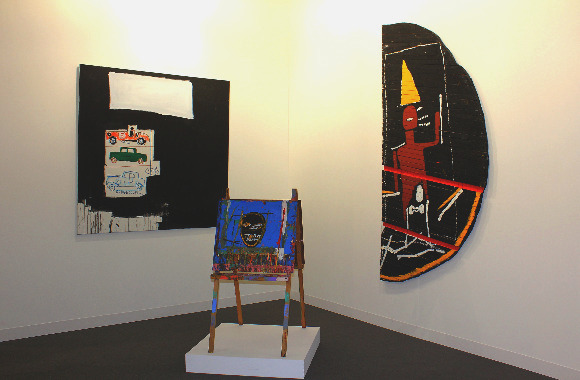
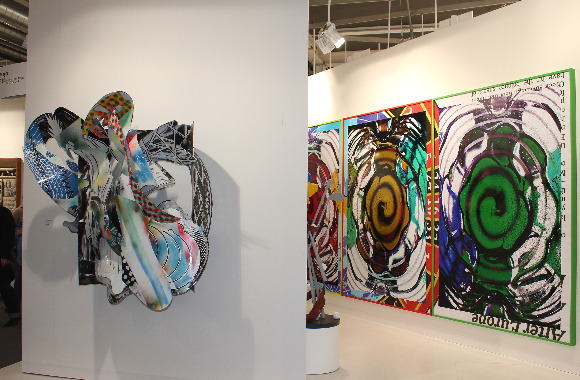
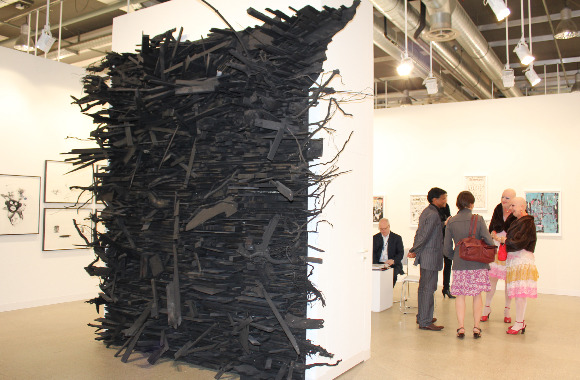
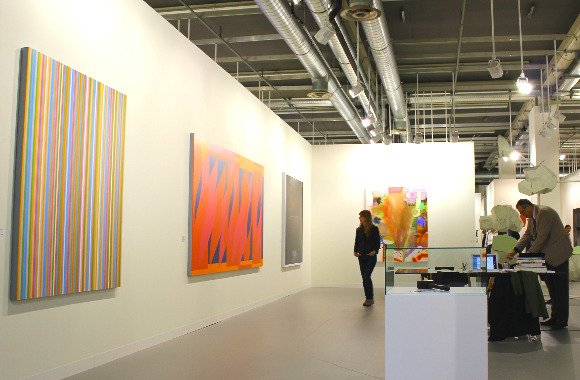
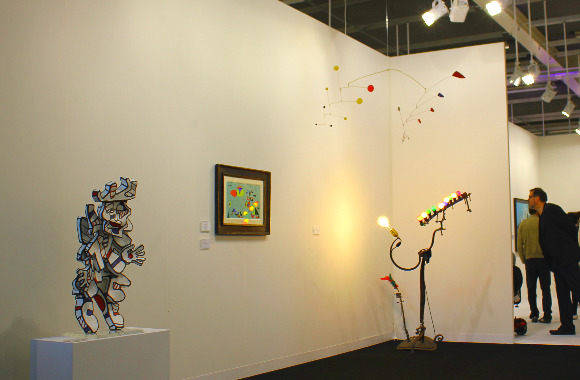
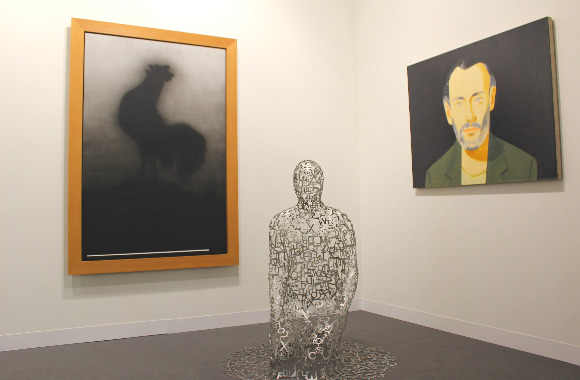

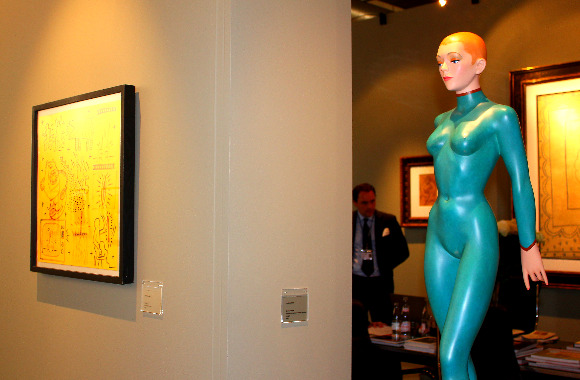


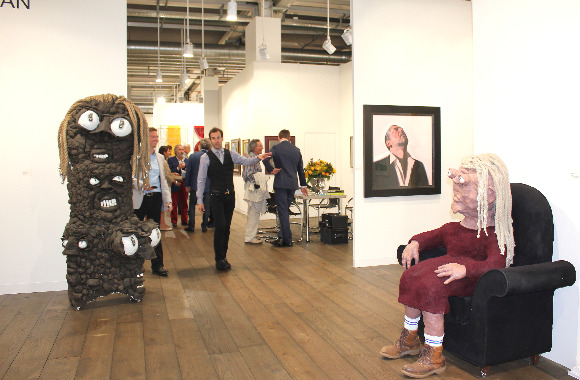
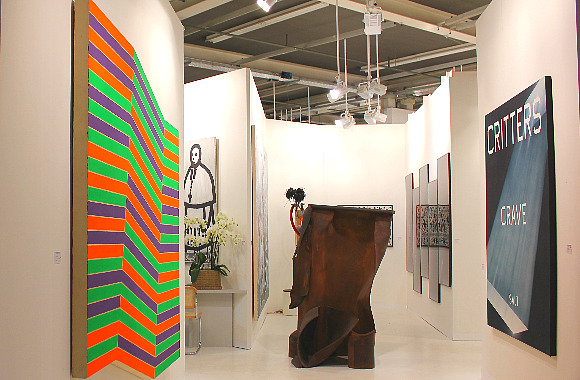
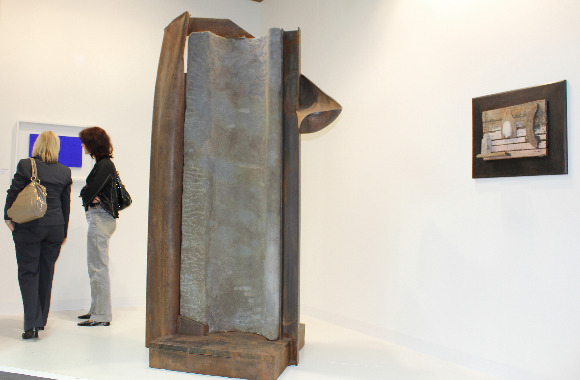
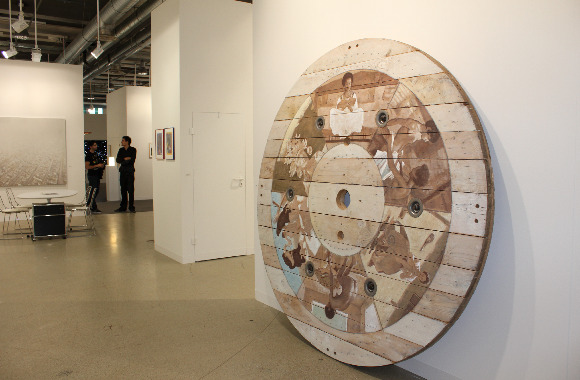
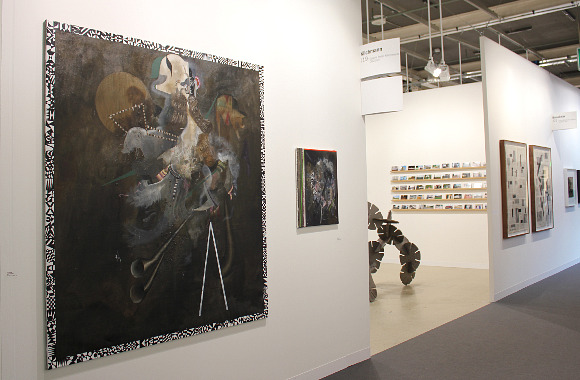
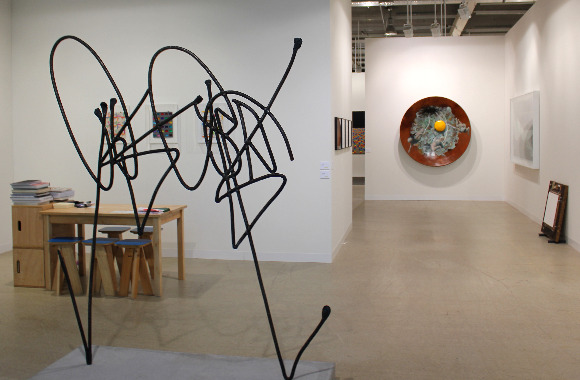
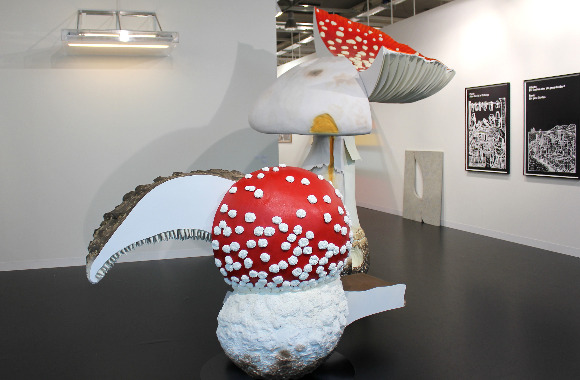
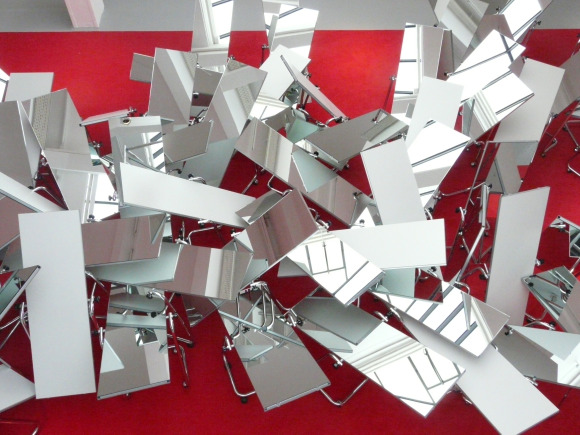
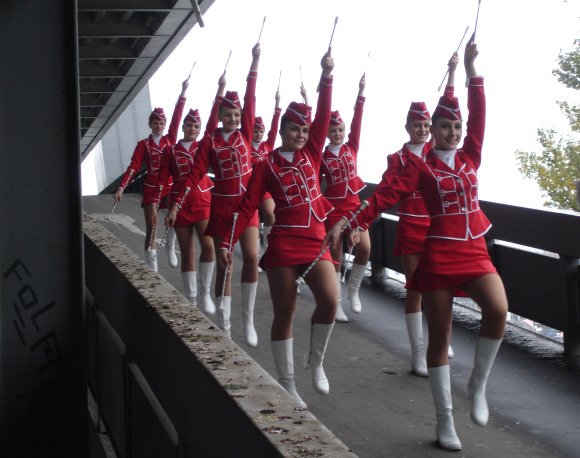
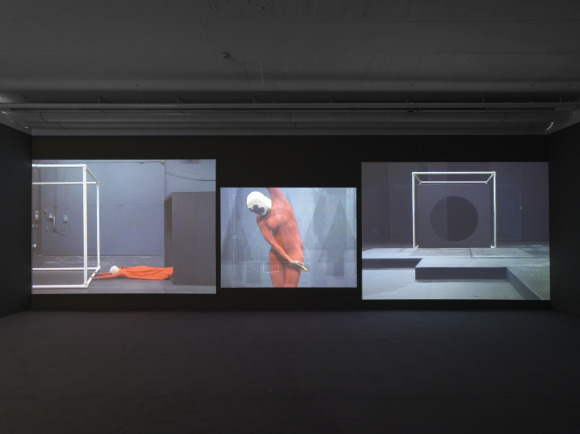
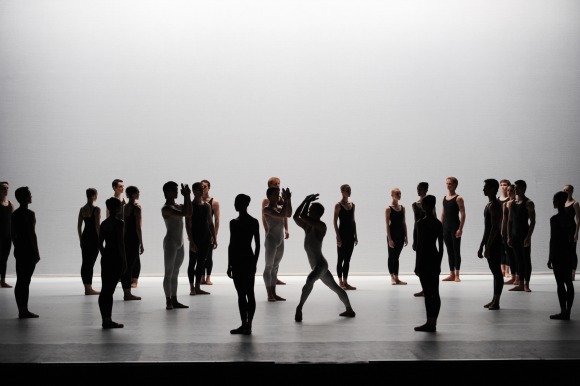
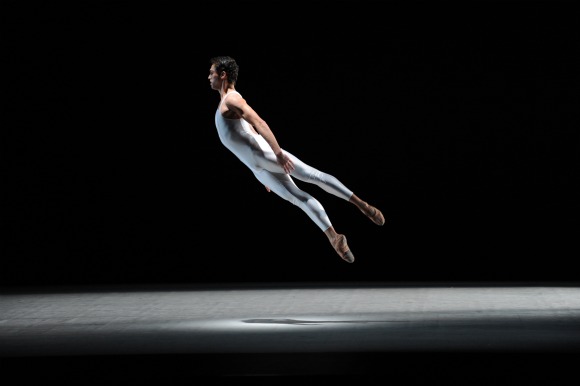
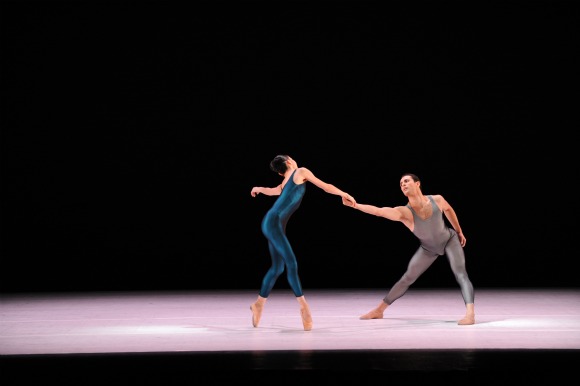
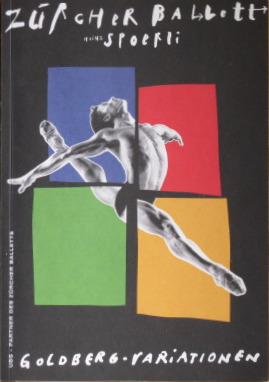
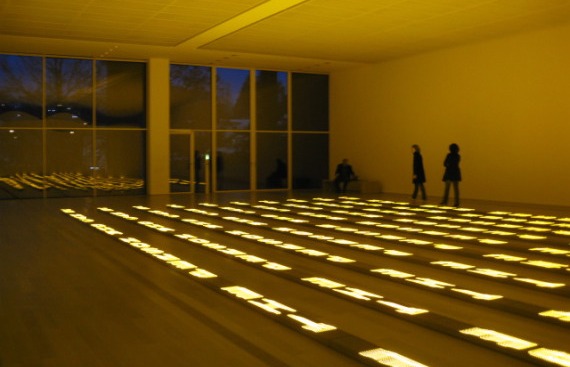











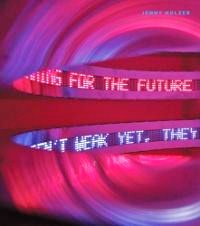



Leave your comment